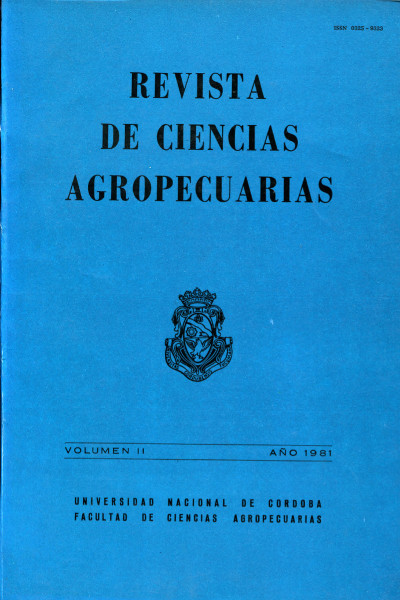The average water balance of Manfredi (Cordoba, Argentina)
Main Article Content
Abstract
Downloads
Article Details
References
BROCHET, P. et N. Gerbier. 1968. L'ecapotranspiration. Aspect Agrometeorologique, Evaluation Practique de L evapotranspiration Potentielle. Monographie de la Metéorologie Nationales NQ 65. París.
BURGOS, J. J. 1993. El clima de las Regiones Aridas en la República Argentina. RIA INTA, 17(4). Buenos Aires.
BURGOS, J. ,¡. y A. L. Vidal, 1951. Los Climas de la República Argentina según la nueva clasificación de Thornthwaite. Meteoros, año I (1). Bs. As.
GRASSI, C. J. 1968. Estimación de los Usos Consuntivos de Agua y Requerimientos de Riego con fines de Formulación y Diseño de Proyectos. CIDIAT, Documento NQ 53, Mérida, Venezuela.
PASCALE, A. J. y E. A. Damario. El Balance Hidrológico Seriado y su utilización en Estudios Agroclimáticos, (inédito). Comunicación personal,
THORNTHWAITE, C. W. y J. R. Mather. 1957. Instrucciones y tablas para el cómputo de la evapotranspiración potencial y el balance hídrico. Instituto de Suelos y Agrotecnia, INTA. Tirada interna NQ 46, Buenos Aires
THORNTHWAITE, C. W. y J. R. Mather. 1955. The water balance. Drexel Institute of Technology Publications in Climato'ogy Volume VIII. Number 1 Centerton, New jersey.





